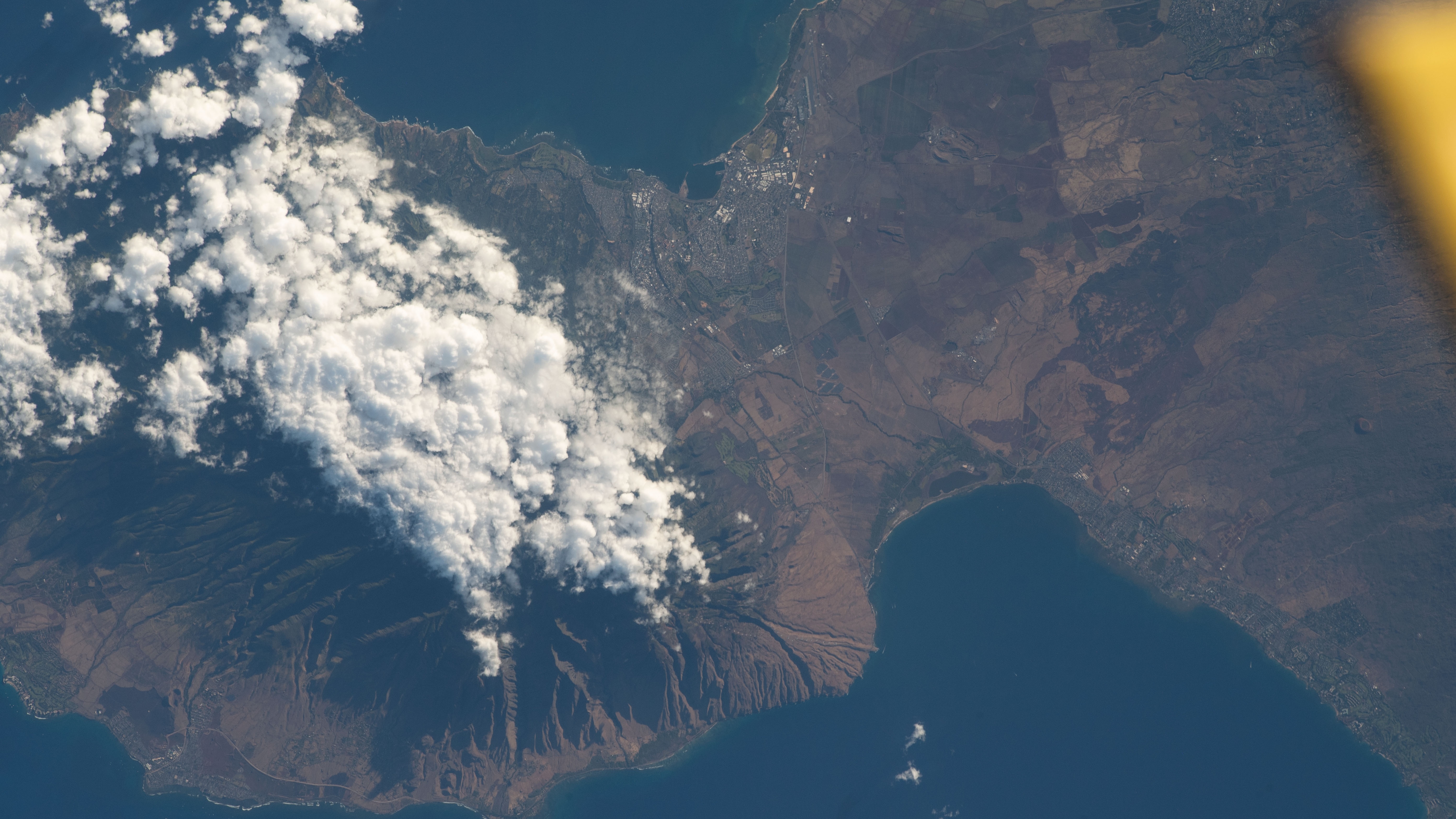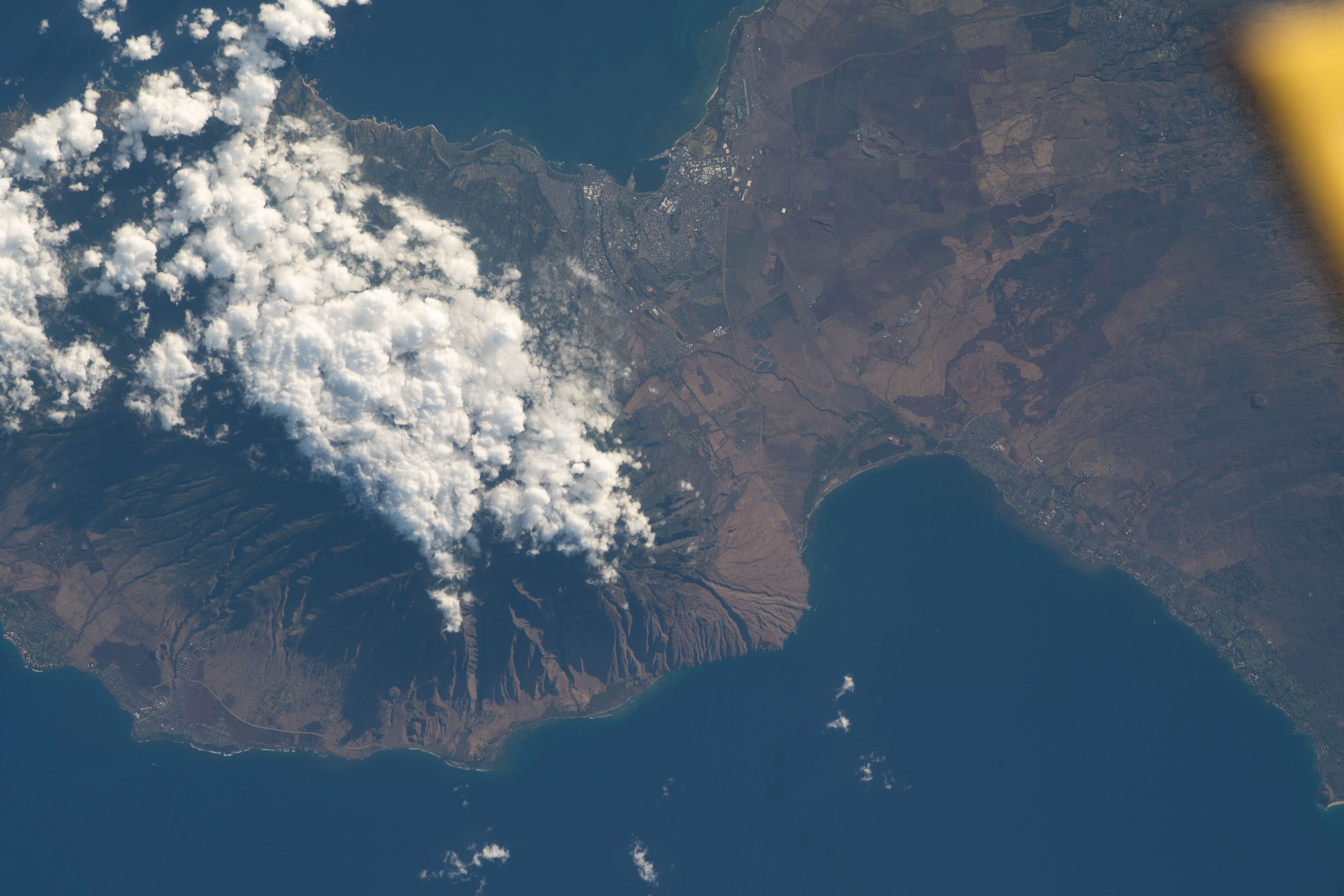
Satellite imagery captured by the International Space Station (ISS) on Saturday (Aug. 12) shows the Hawaiian island of Maui four days after wildfires broke out on the land. The photo was taken as the spaceborne laboratory orbited some 259 miles (417 km) above the Pacific Ocean.
As of Wednesday (Aug. 16), the death toll of Hawaii's catastrophic fires rose above 100. Shortly after confirmation of this figure, Governor Josh Green addressed the public saying "We are heartsick that we’ve had such loss."
And not only is this devastation being deeply felt and thoroughly documented around the world — especially because it emphasizes a deadly consequence of human-driven climate change — but it's also being recorded from space.
On the scene's lower left, the coastal town of Lahaina is pictured. Lahaina was one of the hardest-hit areas during the fires, seeing nearly all of its infrastructure turned to ash including monumental buildings such as the historic Waiola Church and natural wonders like a 150-year-old Banyan tree.
Related: Aftermath of Hawaii's deadly wildfire inferno revealed in gut-wrenching satellite images

Other Earth–orbiting devices managed to catch views of the tragedy as well, including NASA's Landsat 8 satellite and Europe's Sentinel-2 Earth-observing spacecraft. Both flew above the Hawaiian wildfires on Aug. 8 and offered gut-wrenching images of the aftermath of these flames, which have been named the deadliest in the state's history.
Though a specific cause for the wildfires has yet to be announced, experts have started weighing in on what some of the likely factors are. NASA, for instance, took to a press conference on Monday (Aug. 14) and suggested that local situations on Maui such as abandoned sugar plantations as well as non-native grasses might've played a role — but also underlined that climate change most definitely is a piece of the puzzle.
"In general," Gavin Schmidt, director of NASA's Goddard Institute for Space Studies, said during the conference, "climate change is a kind of threat-multiplier for wildfires."
On Tuesday (Aug. 15), local officials announced that the fires have mostly been contained with Lahaina seeing 85% containment and other regions seeing 100% containment. However, as officials note, "When a fire is 100% contained, it does not mean it has been extinguished. It means that firefighters have the blaze fully surrounded by a perimeter, inside which it can still burn."
"A fire is declared 'extinguished,' when fire personnel believe there is nothing left burning."
Thousands of Hawaiian residents were forced to flee their homes due to the disaster and over one thousand more are still reported as missing.







